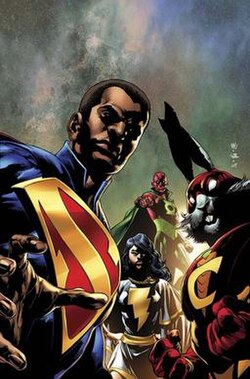The folk of Azurth seem less troubled by gods than the people of other lands. Or perhaps it's merely religion they are less troubled with. The small shrines and occasional monastery were sufficient for them, until the Wizard decided his new revelation called for a more elaborate priesthood and administration for the state church.
Azulina: The blue Faerie Queen is the center of reverence in Azulinism, the preeminent religion of the Land. The myths say she requested (and got) special dispensation from the gods of the outer world for her own subcreation: Azurth and its environs. Once it was done, Azulina and her sister-handmaidens entered the little world and brought life to the things that were there. The royal family of Azurth were held to be of the family of Azulina by magical adoption. The four handmaidens and companions of Azulina have monastic orders and shrines dedicated to each of them:
Iolanthe: Lady of Knowledge and Communication. Her color is purple. [Domain: Knowledge]
Cerise: Lady of Love. Her color is rose. [Domain: Life]
Pyrrha: Lady of Battle. Her color is vermilion. [Domain: War]
Melaina: Lady of Souls. Her color is indigo. [Domain: Death]
Gob: Beneath the Cave Land of Subazurth at the center of the world, there dwells a giant, crystalline gnome, and his name is Gob. It was Gob, master artificer, who did most of the heavy work in the creation of Azurth, all for the love of Azulina. Gob is seldom directly worshiped, but he is frequently named in oaths and exclamations by Azurthites.
Machine Mysteries: There are minor (and somewhat disreputable cults) in Yanth (in the main) based around itinerant, tent show performances whose primary attractions are automata called "god machines". Adherents believe god machines differ from other clockwork, electrical, or steam-powered contrivances by being imbued by "divine motive power." Side shows of clockwork tableaux vivants or magic lanterns revealing central myths may be free, but the god machine can only be viewed by initiates--i.e., those that have paid the admission price. Performances of machine mysteries are often accompanied by ecstatic (even orgiastic) rites, contributing to their reputation--and popularity.
Outer Gods: Some of the true gods of the outer world, greater than fae godlings of Azurth, are known in myth and legend: Urania, Queen of Heaven, who gave Azulina her blessing in Azurth's creation; Pan, whose piping is heard by the druids in the ancient forests of Virid; and the greatest of all, the Slumbering God with many names, who created all the gods, and now sleeps, his work done. There is an ascetic order in Azurth that venerates this last, but they hold that all the world was created (and exists only) within the great god's dreams and will fade when he wakes.
1 hour ago


















.jpg)




